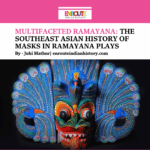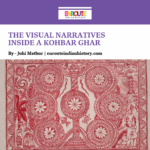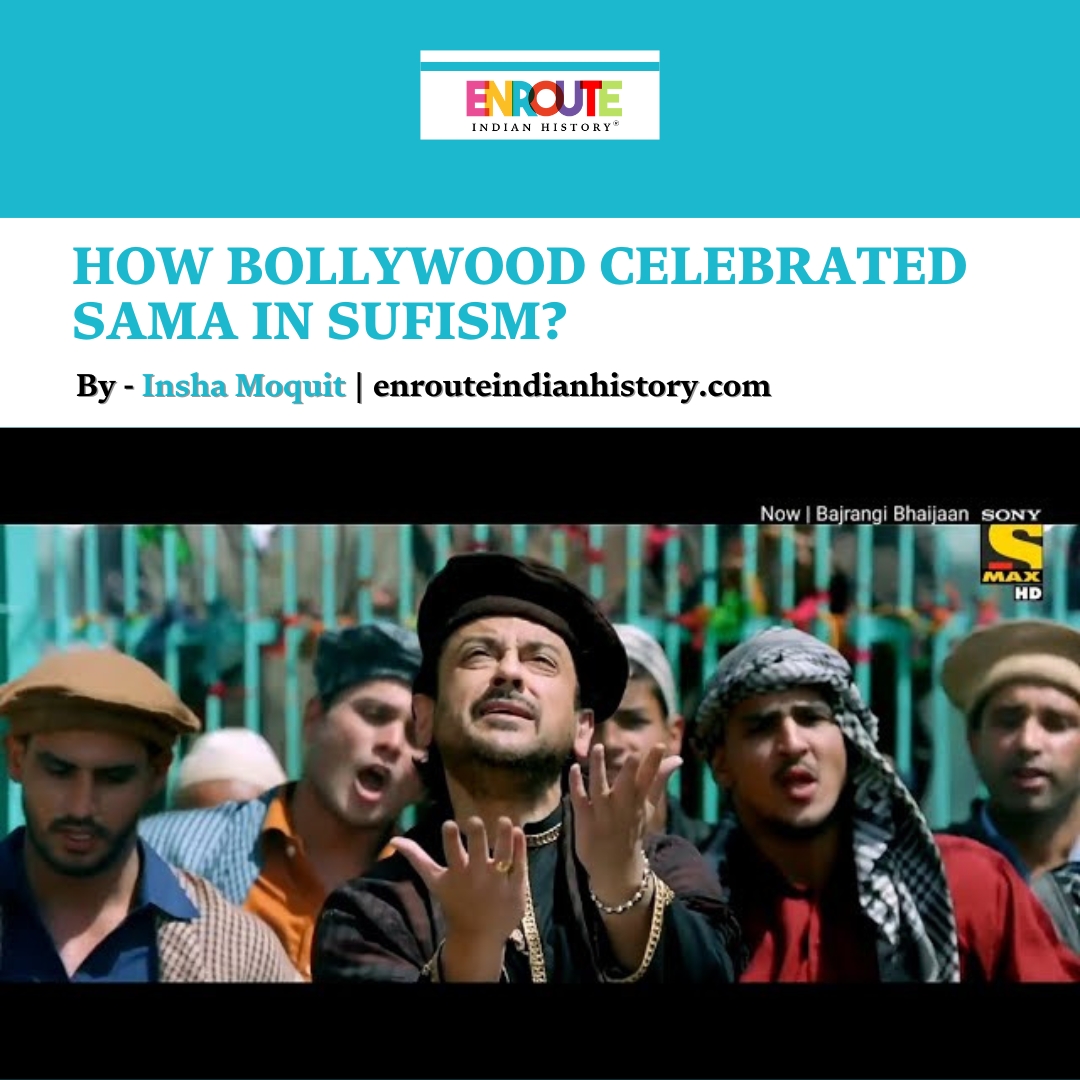
In the profound world of Sufism, Samá serves as an intimate path to the Divine. This sacred musical and meditative ritual transports mystics into realms where music, poetry, dance and spirituality converge to create a transformative experience. As a celebration of divine love and union, Samá is much more than a simple musical ceremony; it is a carefully orchestrated spiritual practice that intertwines space, time, and companionship to elevate the soul.
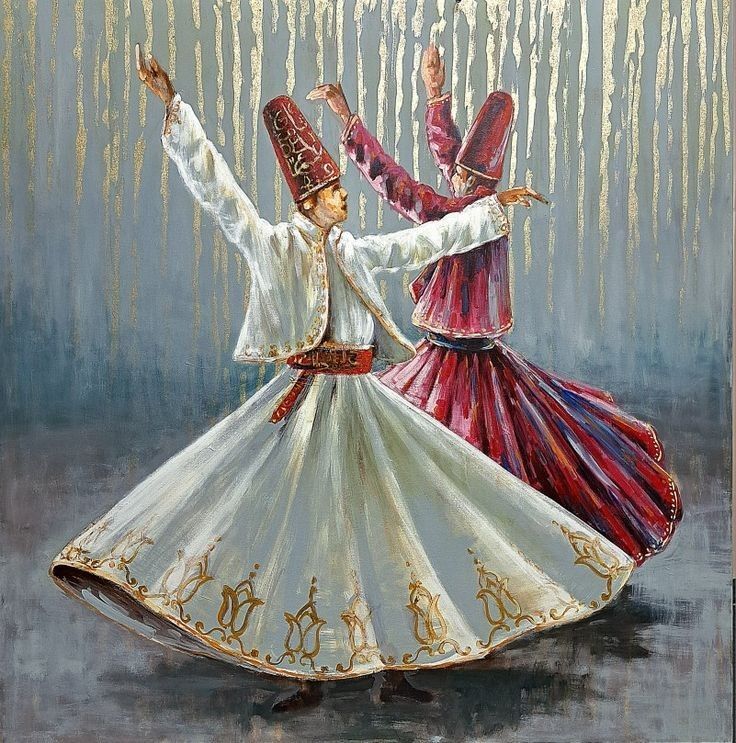
(Dance of the Whirling Dervishes, a part of Sufi Sama. source: Google photos)
The Sacred Samá Rituals
Samá, derived from the Arabic word “listening” or “audition,” is integral to many Sufi orders. It incorporates music, poetry, and dance to foster a deep spiritual connection between the participant and the Divine. The tradition emphasizes the necessity of the right setting, aligning with specific metaphysical elements such as the right time, right place, and right companions. These prerequisites are not merely logistical; they are imbued with spiritual significance that creates an atmosphere conducive to divine ecstasy. Ahmad al-Ghazali, one of the major proponents of Samá, emphasized that the concert should only occur when the listener is ready—free from worldly distractions, filled with devotion, and amidst a spiritually conducive environment.
Sacred Space and Time in Sufism
In Sufi tradition, the notion of sacred space is vital for the mystical experience of Samá. The physical location plays a significant role in shaping the participants’ spiritual experience, as it is seen as a vessel for divine light. The “right place,” as described by Sufi scholars like Ghazali and Tufi, is any location that fosters divine connection, including mosques, khanqahs (Sufi lodges), and specific sacred spaces like shrines. These spaces hold the spiritual energy necessary to facilitate the “receptive heart,” where divine illumination can descend.
Moreover, the right time for Samá is not based on conventional temporal frameworks but revolves around the mystical condition of the participants. The heart must be in a state of readiness, unattached to the material world, and deeply focused on the divine. This explains why some Sufi gatherings happen late at night or at dawn, when the soul is believed to be more sensitive to spiritual energies.
One powerful manifestation of Samá in contemporary times can be observed in gatherings at Nizamuddin Dargah in Delhi and Ajmer Sharif in Rajasthan. Here, amidst the whispers of Sufi hymns, qawwals (traditional Sufi singers) elevate the collective consciousness of those present, facilitating a shared spiritual experience. These events have preserved the traditional Samá ritual while making it accessible to broader audiences, including non-initiates who are drawn to its mystical and artistic allure.

(Source: Wikimedia Commons)
Mystical Samá Gatherings: The Role of Companionship
The third essential condition for Samá is the right companion. In Sufism, spiritual companionship is highly regarded, and Samá gatherings are no exception. The participants’ spiritual state can significantly influence one another, creating a synergistic flow of divine energy. Al-Ghazali stressed that Samá should be performed only in the company of spiritually refined individuals, as the presence of those disconnected from the sacred could taint the spiritual atmosphere. In his words, the uninitiated should not participate, as they lack the “refined sentiment of the heart.”
This concept of companionship is reflected in the way Samá gatherings operate in Sufi shrines today. For example, at the annual Urs festival (a commemoration of a Sufi saint’s death) at Ajmer Sharif, the sacred atmosphere is enhanced by the presence of thousands of devotees who gather in reverence. The participants, while varying in their spiritual experiences, collectively create an energy conducive to the Sufi ideal of divine union. Each person contributes to the shared aspiration of losing oneself in the ecstasy of God’s presence, making the Samá more than a personal experience; it is a collective journey to the Divine.
Samá and Divine Union
Central to Samá is the pursuit of divine union. The ritual itself is a metaphorical dance between the human soul and the Divine, with music serving as the medium that transcends the earthly plane. Through ecstatic music and poetry, the Sufi seeks to break free from the confines of the material world and merge with the eternal light of the Divine. In the Persian Sufi tradition, mystics like Rumi and Hafiz have expressed this yearning through poetry, which is often recited during Samá ceremonies.
Rumi, in particular, described its importance in fostering the longing and love essential for divine union. The Whirling Dervishes of the Mevlevi order embody this concept physically and spiritually. Their spinning dance symbolizes the rotation of the universe, a metaphor for the soul’s journey toward the Divine. In these moments, the physical act of whirling merges with the spiritual goal of annihilating the ego and dissolving into the oneness of God. As Rumi quotes, “One hand pointed up the sky, the other hand pointing down to earth; every speck of love we receive from God, we pledge to distribute to the people.”
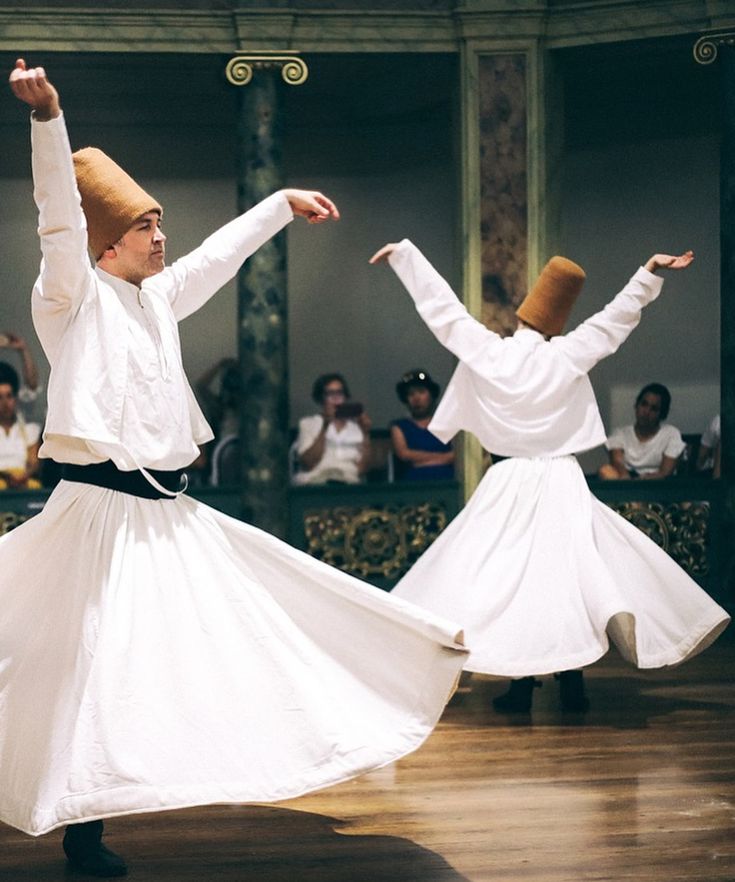
(source: Pinterest)
Contemporary Samá: The Example of Nizamuddin Dargah
Today, Nizamuddin Dargah in Delhi stands as one of the most significant centers for Samá in the world. Known for its weekly qawwali performances, the dargah attracts devotees and tourists alike, all seeking solace in the power of Sufi music. The atmosphere is electric yet serene, a reflection of the sacred energy invoked through the practice of Samá. Here, the centuries-old tradition of divine music remains alive, with the qawwals performing songs that stir the soul and facilitate spiritual reflection.
These performances often incorporate the poetry of Sufi saints like Amir Khusro and Baba Farid, whose words capture the ineffable experience of longing for God. The impact of these gatherings extends beyond the immediate spiritual experience, as they help sustain the rich cultural and musical heritage of the region. The Samá at Nizamuddin is a reminder of the profound ways in which music, when aligned with spiritual intention, can elevate the soul and foster a connection to the divine.
Indo-Islamic Cultural Fusion
When Sufis came to India, they discovered a rich tapestry of musical traditions that aligned with their mystical beliefs. This merger of Sufi Samá and Indian devotional music laid the groundwork for cultural fusion, with spiritual traditions from Islam and Hinduism perfectly linked.
The Chishti Sufi order, in particular, promoted the consolidation. Saints like Amir Khusrao modified qawwali, an important component of Samá, by combining indigenous musical styles like bhajan-kirtan (Hindu devotional music) with spiritual poetry of Persian and Arabic provenance. The ultimate result was a unique musical experience that cut across religious boundaries. Khusrao is credited with creating or popularizing instruments such as the sitar, tabla, and sarangi, which all contributed significantly to the Samá ritual’s success. These instruments became crucial to Hindu and Muslim devotional music, representing the confluence of spiritual traditions.
Through Sufi Samá, music served as a conduit for spiritual bliss. It brought individuals of various faiths together for a common spiritual experience. Samá fostered religious tolerance while also enriching India’s spiritual and musical environment through cross-cultural exchange.
Bollywood’s Engagement with Sufi Themes: More Than Just Music
Bollywood filmmakers have employed Sufi music as a powerful narrative device to evoke spiritual awakening and emotional catharsis in characters. This cinematic use of Sufi music often aligns with its traditional role in mysticism, where it is seen as a medium to transcend worldly concerns and unite with the Divine. A notable example is “Jodha Akbar,” directed by Ashutosh Gowariker, which features an iconic scene of Sama right after the wedding of Jodha and Akbar. The song “Khwaja Mere Khwaja” not only serves as a moment of prayer for Emperor Akbar but also symbolizes his humility and surrender before a higher spiritual power. The slow, rhythmic cadence of the qawwali and the visual imagery of Akbar seated among the devotees and then joining them in their whirling dance create an atmosphere of spiritual submission, a pivotal moment that underscores his personal transformation.
In interviews, Hrithik Roshan, who played Akbar, described how performing this scene deeply affected him. He noted that the atmosphere made him feel a “sense of divine presence,” allowing him to connect with the spirituality of the character on a more profound level. He commented that the scene was not just about acting but about experiencing the “magic” of a sacred space, which transcended the boundaries of fiction and brought him closer to the real essence of Akbar’s spiritual journey.

( A still from Khwaja mere Khwaja , Source: Google photos )
While Jodha Akbar beautifully captures the essence of Sufi spirituality, “Rockstar,” directed by Imtiaz Ali, delves deeper into the complex interplay between personal suffering, artistic creation, and spiritual realization. The protagonist, Jordan (played by Ranbir Kapoor), finds his music infused with Sufi overtones, reflecting his internal journey of pain, loss, and spiritual longing. The song “Kun Faya Kun,” shot at Hazrat Nizamuddin Dargah in Delhi, stands out as a moment of spiritual epiphany for Jordan. The sacred surroundings and the power of the qawwali resonate with his existential struggles, portraying music as the bridge between the human and the divine.
In interviews, Kapoor has shared that shooting at Nizamuddin Dargah was a deeply humbling experience. He expressed that being in such a revered space influenced his portrayal of the character’s emotional and spiritual turmoil. The feeling of divine connection and peace that permeated the dargah, combined with the stirring Sufi music, created a sense of “realness” that transcended acting. Renowned composer AR Rahman, who crafted Rockstar’s album, reacted to the scene where Ranbir was immersed in the feeling and said, “Zoned out. It was beautiful.” Lyricist Irshad Kamil further added, “In the middle of that, I called Imtiaz and told him that something else is happening, and you please come here and be a witness of what is happening here.”


(Stills from Kun Faya Kun, source: Google Photos)
Other Bollywood films have also successfully integrated Sufi music and spirituality, creating moments of transcendence that resonate with audiences. In “Bajrangi Bhaijaan,” the song “Bhar Do Jholi Meri” is set in a Sufi shrine, capturing the protagonist’s moment of vulnerability and submission to divine will. Sung by Adnan Sami, this qawwali is an invocation for divine help, reflecting the protagonist’s faith in the unseen power that guides him through a seemingly impossible quest. The spiritual weight of the song reinforces the film’s underlying theme of faith, compassion, and divine intervention.

(A still from Bhar do Jholi, Source: Wikimedia Commons)
The use of Sufi music in Bollywood also speaks to a larger trend of using Sufism as a cinematic language to explore spirituality in a way that resonates with contemporary audiences. By incorporating elements of Samá, qawwali, and Sufi poetry, filmmakers are able to convey the ineffable aspects of the human condition—yearning, love, loss, and the search for divine connection.
Conclusion: Samá as a Timeless Spiritual Practice
The practice of Samá continues to be a vital expression of Sufi spirituality. Rooted in the sacred concepts of time, space, and companionship, Samá is not simply an auditory experience but a full-bodied journey towards divine ecstasy. Whether performed in the sacred precincts of Sufi shrines like Ajmer Sharif and Nizamuddin Dargah or depicted in modern films like “Jodha Akbar” or “Rockstar,” the essence of Samá remains constant: it is a mystical path that elevates the soul through music, poetry, and divine love.
In this increasingly secular world, the enduring relevance of Samá lies in its ability to transcend cultural and religious boundaries. It speaks to the universal human experience of yearning for something greater than oneself—a connection to the divine that, through music and spirituality, becomes tangible. In the words of Rumi, “The music of Samá is the food of lovers.” For those who seek, Samá continues to offer nourishment for the spirit, providing a sacred space for the eternal dance between the soul and the Divine.

(A sufi Sama, Source: Wikimedia Commons)
REFERENCES
Aquil, Raziuddin. “Music and Related Practices in Chishti Sufìsm: Celebrations and Contestations.” Social Scientist, vol. 40, no. 3/4, 2012, pp. 17–32. JSTOR, http://www.jstor.org/stable/41633800. Accessed 30 Sept. 2024.
Brenner, Louis, and Annemarie Schimmel. “Mystical Dimensions of Islam.” The International Journal of African Historical Studies, vol. 9, no. 3, Jan. 1976, p. 477. https://doi.org/10.2307/216858.
Feldman, Walter. “DEFINING THE MYSTICAL MUSIC OF THE MEVLEVI DERVISHES.” From Rumi to the Whirling Dervishes: Music, Poetry, and Mysticism in the Ottoman Empire, Edinburgh University Press, 2022, pp. 12–33. JSTOR, http://www.jstor.org/stable/10.3366/j.ctv2dd4798.10. Accessed 30 Sept. 2024.
Narang, Gopi Chand, and David Matthews. “The Indo-Islamic Cultural Fusion and the Institution of the Qawwali.” Indian Literature, vol. 58, no. 4 (282), 2014, pp. 160–71. JSTOR, http://www.jstor.org/stable/44753803. Accessed 30 Sept. 2024.
Sakata, Hiromi Lorraine. “The Sacred and the Profane: ‘Qawwālī’ Represented in the Performances of Nusrat Fateh Ali Khan.” The World of Music, vol. 36, no. 3, 1994, pp. 86–99. JSTOR, http://www.jstor.org/stable/43562829. Accessed 30 Sept. 2024.
Zilli, I. A. “EARLY SUFI THOUGHT IN INDIA.” Proceedings of the Indian History Congress, vol. 38, 1977, pp. 279–91. JSTOR, http://www.jstor.org/stable/44139082. Accessed 30 Sept. 2024.


